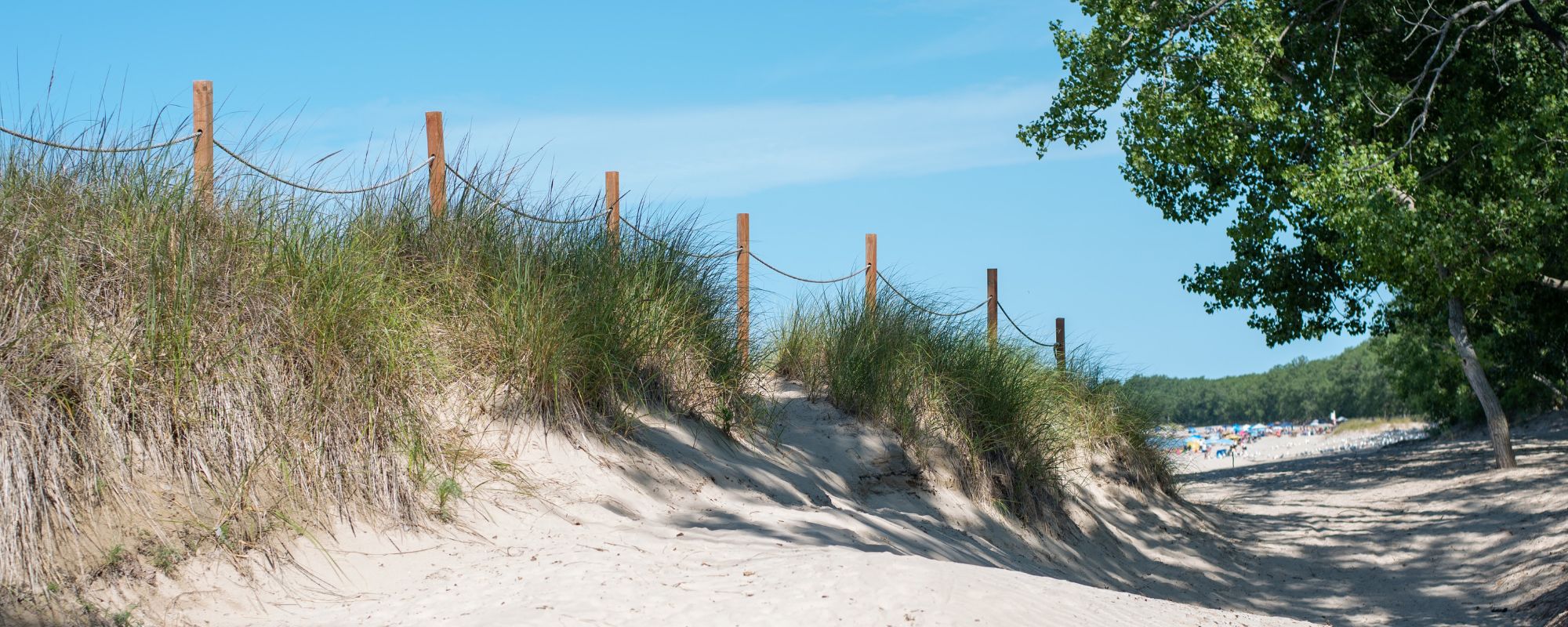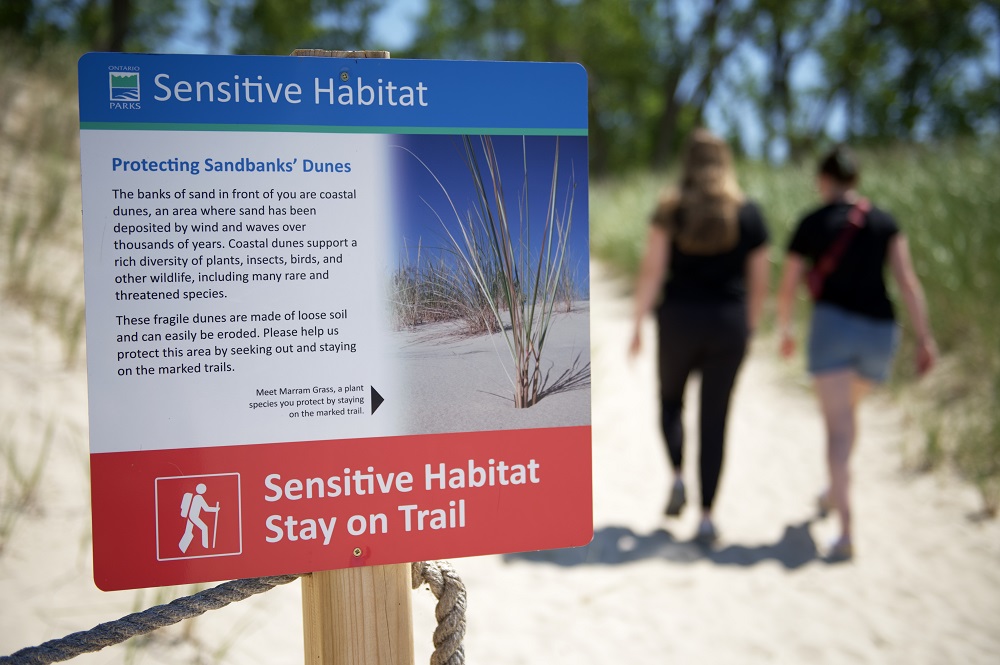
Today’s post comes from Fraser Moodey, chief park naturalist at Sandbanks Provincial Park.
At Sandbanks, the pressures of wind and waves constantly shape the dynamic dune systems.
These processes have been at play for thousands of years and through time, have crafted the very beaches we enjoy today.
However, a much more powerful force has taken hold at the park in recent years: the compelling urge to venture off-trail.
During the busy summer months at Sandbanks, unique trails are crafted throughout the dunes. They may be called “shortcuts” or “social trails,” but all have the same effect on this sandy landscape.
The unfortunate outcome of off-trail travel through the dunes is dead plants.
~
Domino effect
Native dune plants are crucial for the stability of these fragile sandhills.
Without their roots holding the substrate in place, the dunes begin to shift and collapse.
Along with vegetation loss, another pressure has begun to take hold in the dunes: fragmentation.

Habitat fragmentation occurs when a once large habitat is gradually transformed into several isolated areas. This might seem minorly intrusive; however, a divided habitat can lead to a cascade of issues for sensitive dune areas.
Separated from a previously monogamous environment, the diversity of wildlife begins to dwindle.
With reduced gene flow, native animals and especially plants have a more difficult time adapting to the changing habitat. Niche, low-population species can be secluded from one another, posing a significant risk to their future success within the dunes.
Picture a Deer Mouse whose foraging ground exists among the dense understory of Marram Grass.

As more trails are formed through its habitat, larger gaps of open sand begin to divide up the Marram Grass canopy. The Deer Mouse is more likely to no longer venture across the barren trail for fear that an opportunistic kestrel or Red Fox may be watching.
With a reduced area for foraging and nesting sites, this Deer Mouse might have to leave the area permanently to survive.
However, not all creatures are negatively affected by fragmentation. One type of wildlife that can thrive in this environment is invasive species.
~
Invader alert
Invasive species are great at adapting to disturbed environments.
When many paths are cut through the dunes, it allows destructive, non-native species to fill in these gaps. The more a habitat is fragmented, the greater the threat of invasive pressures on native wildlife.

Despite this, the battle is not lost! Although fragmentation poses a risk to the dunes, the park and its visitors can fight back.
~
Do it for the dunes!
Over the past two seasons, Sandbanks has been hard at work completing our post and rope project along Outlet Beach and North Beach.
We have established a barrier along large stretches of the foredunes, leaving the sandy shoreline to enjoy. The designated trail entrances remain open.

Accompanied by interpretive signs, we hope this blockade can serve as both a deterrent and a learning opportunity for visitors. The post and rope project provides a full view of the dunes while ensuring that they can stay preserved for many more generations of beachgoers.
Inside the perimeter, active dune restoration is occurring.

In collaboration with local school groups, we have begun replanting native dune vegetation throughout disturbed areas. Our school programs offer kids the chance to not only experience an exciting field trip but also preserve their local habitats.
Planting Marram Grass along open areas of the dunes gives them a chance to heal – creating a strong foundation for a more stable dune system in the future.
~
Protecting precious systems
The dunes at Sandbanks have provided memories of warm, sunny days that last a lifetime.

With all of us making an effort to preserve this special place, we can help make parks a more appealing place to wildlife and visitors alike.
Watching our footprint is the first step in stability for one of Ontario’s most iconic natural wonders.


